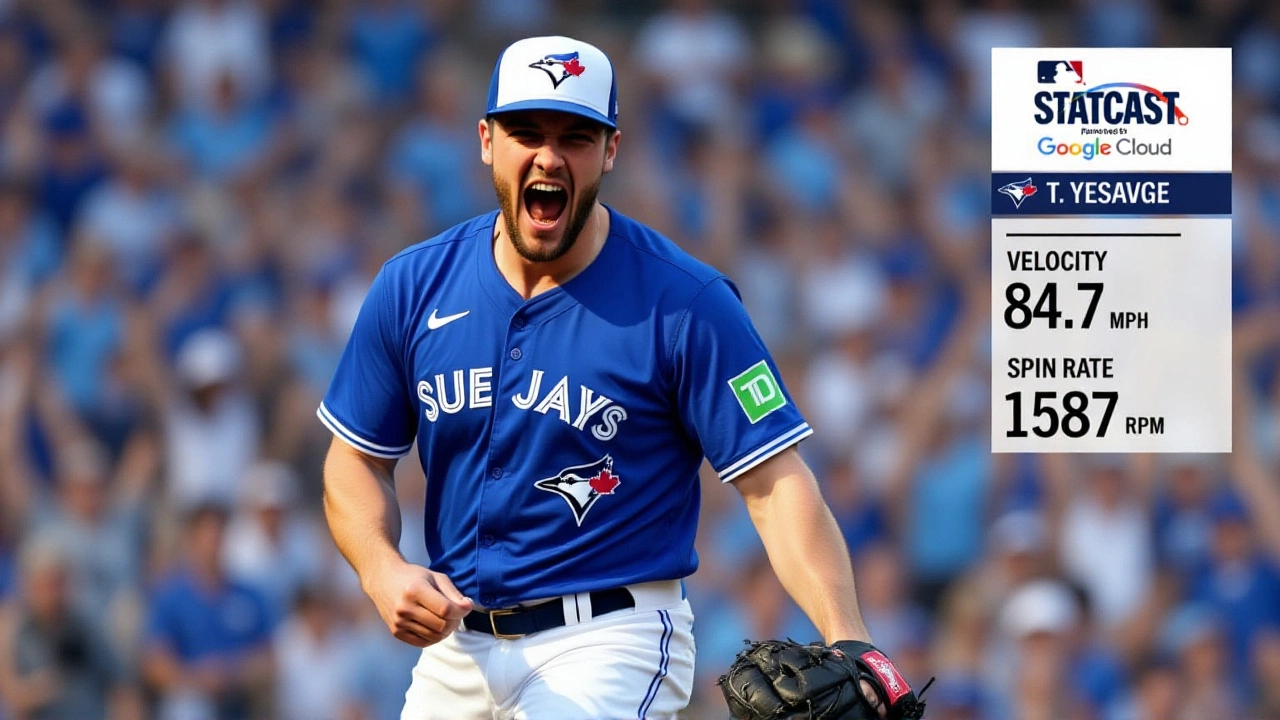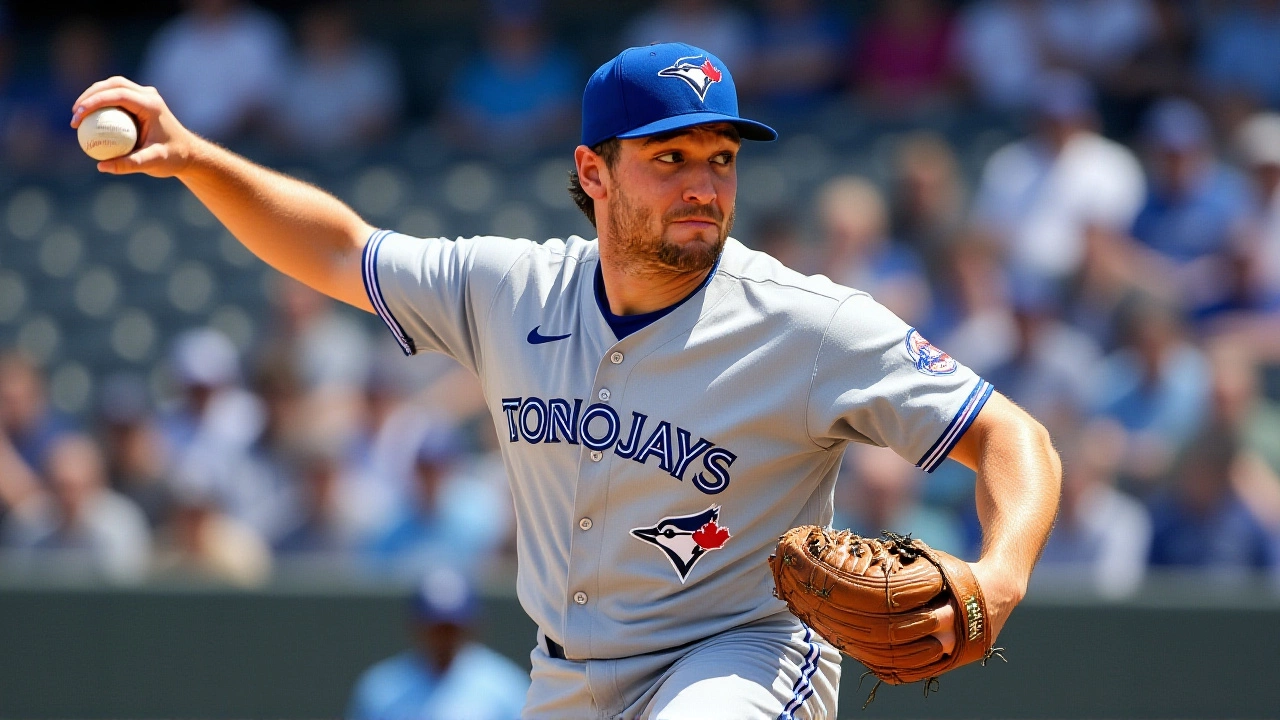When Trey Yesavage, right‑hander for Toronto Blue Jays delivered a 5⅓‑inning, no‑hit masterpiece on October 5, 2025, the American League Division Series Game 2Rogers Centre turned the stadium into a strikeout factory. The rookie fanned 11 Yankees batters, shattering the Blue Jays’ postseason strikeout record and giving the Bronx club a mountain to climb.
Background: How Yesavage Got Here
The story behind the numbers is almost cinematic. Drafted in the ninth round, Yesavage spent the 2025 season sprinting through five minor‑league levels – from Single‑A Dunedin, where he faced the oddly named Mighty Mussels, to Triple‑A Buffalo, where he refined a devastating splitter. By the time he received the call‑up in July, he’d been living out of a suitcase and a handful of hotel rooms. Yet his rapid ascent earned him the nickname “the best development story the Blue Jays have had in years” from Mike Heffernan, Toronto’s director of player development.
In just his fourth major‑league start, Yesavage was thrust into the postseason against a Yankees staff that had done its homework. Video scouts noted his low arm slot and the late‑life break on his splitter, but the pitch’s true movement remained a mystery – a secret that would soon explode on the mound.
Game 2: A Rookie’s Masterclass
From the first pitch, Yesavage announced his intentions. He struck out the Yankees’ leadoff hitter, then followed with two more punch‑outs to end the inning. “It felt like I was just letting the ball find the zone,” the 23‑year‑old told reporters in the locker room. The next three innings saw the Yankees scramble, unable to adjust to the unconventional release point and the splitter that seemed to vanish mid‑air.
Meanwhile, Toronto’s offense erupted. In the fourth inning, Vladimir Guerrero Jr., the Blue Jays’ designated hitter, launched a towering grand slam off Yankees starter Max Fried. The swing sent the crowd into an all‑day party mode, and the scoreboard ticked up to a 13‑7 lead that would hold.
Yankees left‑hander Will Warren tried to stem the tide in the sixth, but Yesavage answered with another strikeout, cementing the record 11 strikeouts that night. The rookie’s final line read 5⅓ innings, 0 hits, 1 walk, 11 K’s – a stat line that eclipsed the previous franchise postseason best of eight, held jointly by David Price (2015) and Juan Guzman (1992).
Reactions from Players and Coaches
Blue Jays manager John Schneider could barely contain his excitement. “Trey reminded us what baseball is about – raw talent, confidence, and a little bit of chaos,” Schneider said, gesturing toward the jubilant fans. In the dugout, teammates chanted Yesavage’s name, a sound that echoed through the concrete arches of the Rogers Centre.
Across the field, Yankees manager Aaron Boone faced a grim reality check. “We were out‑coached and out‑performed. Our scouting missed the mark on his release angle. We have to regroup and fight back,” Boone admitted, his tone a mixture of frustration and resolve.
Even veteran Yankees pitcher Gerrit Cole offered a grudging compliment. “When a rookie comes in and rattles you like that, you respect the thing. He’s got a bright future, no doubt.”

What the Numbers Mean
Statisticians love a good outlier, and Yesavage’s 11‑K effort is one of the most impressive postseason starts in modern MLB history. The 91.2% success rate for teams that win both home games in a best‑of‑five Division Series (31 of 34 times) suggests Toronto is in a commanding position. Historically, teams that go up 2‑0 at home have closed the series in a sweep 65% of the time.
Beyond the record, the performance hints at a shift in pitching development philosophy. The Blue Jays’ analytics department had been experimenting with “early splitter integration” for high‑velocity arms, a strategy that paid dividends this night. According to Dr. Emily Rhodes, senior researcher at the Baseball Innovation Lab, “The splitter’s late break makes it a nightmare for right‑handed hitters, especially when delivered from a low arm slot. Yesavage’s usage showcases a potential league‑wide trend.”
Looking Ahead: Yankees’ Mountain and Blue Jays’ Path
The Yankees now face a three‑game gauntlet if they want to stay alive. Game 3 in New York, followed by a potential Game 4 back at the Rogers Centre, means they’ll need to win on the road twice – a feat they accomplished only twice this season. Their bullpen, already taxed, will have to shoulder the load, and the lineup must find a way to neutralize Yesavage if he appears again.
For Toronto, the victory does more than just put them up 2‑0; it injects confidence into a roster that has flirted with the postseason in recent years but never quite broken through. With the core of Guerrero Jr., Bo Bichette, and the newly minted strikeout king, the Blue Jays could be the first Canadian club to reach the World Series since 1993. The next steps are simple: keep the offense humming, protect the leads, and let Yesavage keep doing what he does best – make batters miss.
Frequently Asked Questions
How does Yesavage’s performance affect the Blue Jays’ chances of reaching the World Series?
His record‑setting strikeout game not only gives Toronto a 2‑0 lead but also boosts team morale and validates the club’s developmental strategies. If the Blue Jays maintain this momentum, they’ll likely clinch the ALDS and face a favorable matchup in the Championship Series, sharpening their odds of a World Series berth.
What made Yesavage’s splitter so effective against the Yankees?
The pitch drops late, almost disappearing before the bat’s sweet spot. Combined with his low arm slot, the splitter creates a deceptive trajectory that New York hitters couldn’t read, especially in the high‑pressure postseason environment.
Can the Yankees realistically win three straight games after this loss?
Statistically it’s a steep hill – only about 10% of teams down 0‑2 have rallied in a best‑of‑five. However, the Yankees’ potent lineup and veteran pitching could spark a comeback if they tighten up defense and adjust to Yesavage’s repertoire.
What does this game mean for the future use of splitters in MLB?
Analysts predict a resurgence. Teams are now re‑evaluating pitch‑mix strategies, and a rookie succeeding with a split‑dominant approach could inspire more pitchers to add it to their arsenal, especially in high‑leverage situations.
When is the next game, and where will it be played?
Game 3 is slated for October 7, 2025, at Yankee Stadium in the Bronx. If the series extends, Game 4 would return to the Rogers Centre on October 9.
